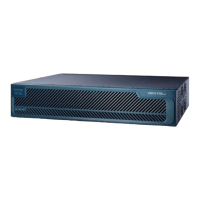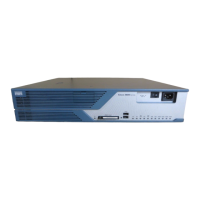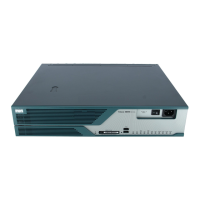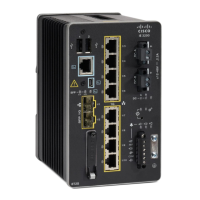2-8
Cisco 3700 Series Routers Hardware Installation Guide
OL-2180-07
Chapter 2 Preparing to Install the Router
Console and Auxiliary Port Considerations
Console and Auxiliary Port Considerations
The router includes an asynchronous serial console port and an auxiliary port. The console and auxiliary
ports provide access to the router either locally using a console terminal connected to the console port,
or remotely using a modem connected to the auxiliary port. This section discusses important cabling
information to consider before connecting the router to a console terminal or modem.
The main difference between the console and auxiliary ports is that the auxiliary port supports hardware
flow control and the console port does not. Flow control paces the transmission of data between a
sending device and a receiving device. Flow control ensures that the receiving device can absorb the data
sent to it before the sending device sends more. When the buffers on the receiving device are full, a
message is sent to the sending device to suspend transmission until the data in the buffers has been
processed. Because the auxiliary port supports flow control, it is ideally suited for use with the
high-speed transmissions of a modem. Console terminals send data at slower speeds than modems;
therefore, the console port is ideally suited for use with console terminals.
Console Port Connections
The router has an EIA/TIA-232 asynchronous serial console port (RJ-45). Depending on the cable and
the adapter used, this port will appear as a DTE or DCE device at the end of the cable.
For connection to a PC running terminal emulation software, your router is provided with an RJ-45 to
DB-9 adapter cable.
To connect the router to an ASCII terminal, use an RJ-45 rollover cable and an RJ-45-to-DB-25 female
adapter (not provided).
The default parameters for the console port are 9600 bps, 8 data bits, no parity, and 2 stop bits. The
console port does not support hardware flow control. For detailed information about installing a console
terminal, see the “Connecting to a Console Terminal or Modem” section on page 3-22.
For cable and port pinouts, see the document Cisco Modular Access Router Cable Specifications on
Cisco.com.
Auxiliary Port Connections
The router has an EIA/TIA-232 asynchronous serial auxiliary port (RJ-45) that supports flow control.
Depending on the cable and the adapter used, this port will appear as a DTE or DCE device at the end
of the cable.
For connection to a modem, your router is provided with an RJ-45-to-DB-25 adapter cable.
For detailed information about connecting devices to the auxiliary port, see the “Connecting to a Console
Terminal or Modem” section on page 3-22.
For cable and port pinouts, see the document Cisco Modular Access Router Cable Specifications on
Cisco.com.

